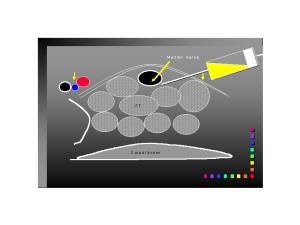The following study was conducted in 2003 by Dr. Iain Duncan. The information is relevant to Doctors referring patients to me suffering from Carpal tunnel syndrome. Patients should note that this information is research only and technical in nature. This information should be used in consultation with your treating physician and may only be relevant in certain medical situations.
Aims
Carpal tunnel syndrome is the commonest form of peripheral nerve entrapment. It is thought to result from compression of the median nerve within the carpal tunnel. Surgical treatment is accepted as the most likely to give permanent relief but a number of non-surgical treatments are also used. Studies of Carpal Tunnel Injection have suggested some benefit up to 3 months but only a few of these have used ultrasound to locate the target.
I receive a large number of referrals for carpal tunnel diagnosis and injection and this study retrospectively evaluated a random selection of these of these over a twelve month period.
Methods
100 injection procedures were randomly selected from 245 registered in my practice database between January 2001 and December of 2002. The patients were then contacted for a structured telephone interview. 28 were either not contactable or unable to complete the questionnaire. Sufficient data was obtained from 72 of these injections (60 patients -12 bilateral procedures). All patients had a clinical diagnosis of carpal tunnel syndrome based on both ultrasound and clinical criteria[1]. All referrals were from local practitioners, neurologists, or surgeons experienced in carpal tunnel syndrome. A standardised questionnaire was administered and results tabulated for analysis.
Results
38 (53%) patients were female and 44 (61%) of the procedures were to the right wrist. The average follow-up time post injection was 11.7 months. 82% had a favourable initial response. The response declined with time: 58% at 2 months, 31% at 6 months, and 25% of patients remaining well at last follow-up. 13 procedures had follow-up times greater than one year and 6 of these had no recurrence. There were no complications and 82% of procedures were considered relatively painless (pain scores 0-2 out of 10). 24% patients proceeded to surgical treatment, 11% were awaiting surgery, 36% were able to avoid surgical treatment, and 29% remained undecided wether further treatment was needed.
Conclusions
This series demonstrates ultrasound guided carpal tunnel injection is a safe well tolerated procedure with a reasonable long-term response rate. The need for surgery in patients treated this way may be significantly reduced.
Iain Duncan MB,BS,FRACP,DDU, FAANMS.
[1] Duncan I, Sullivan P, & Lomas F. Sonography in the Diagnosis of carpal Tunnel Syndrome. AJR 1999;173:681-684. (PDF available)

